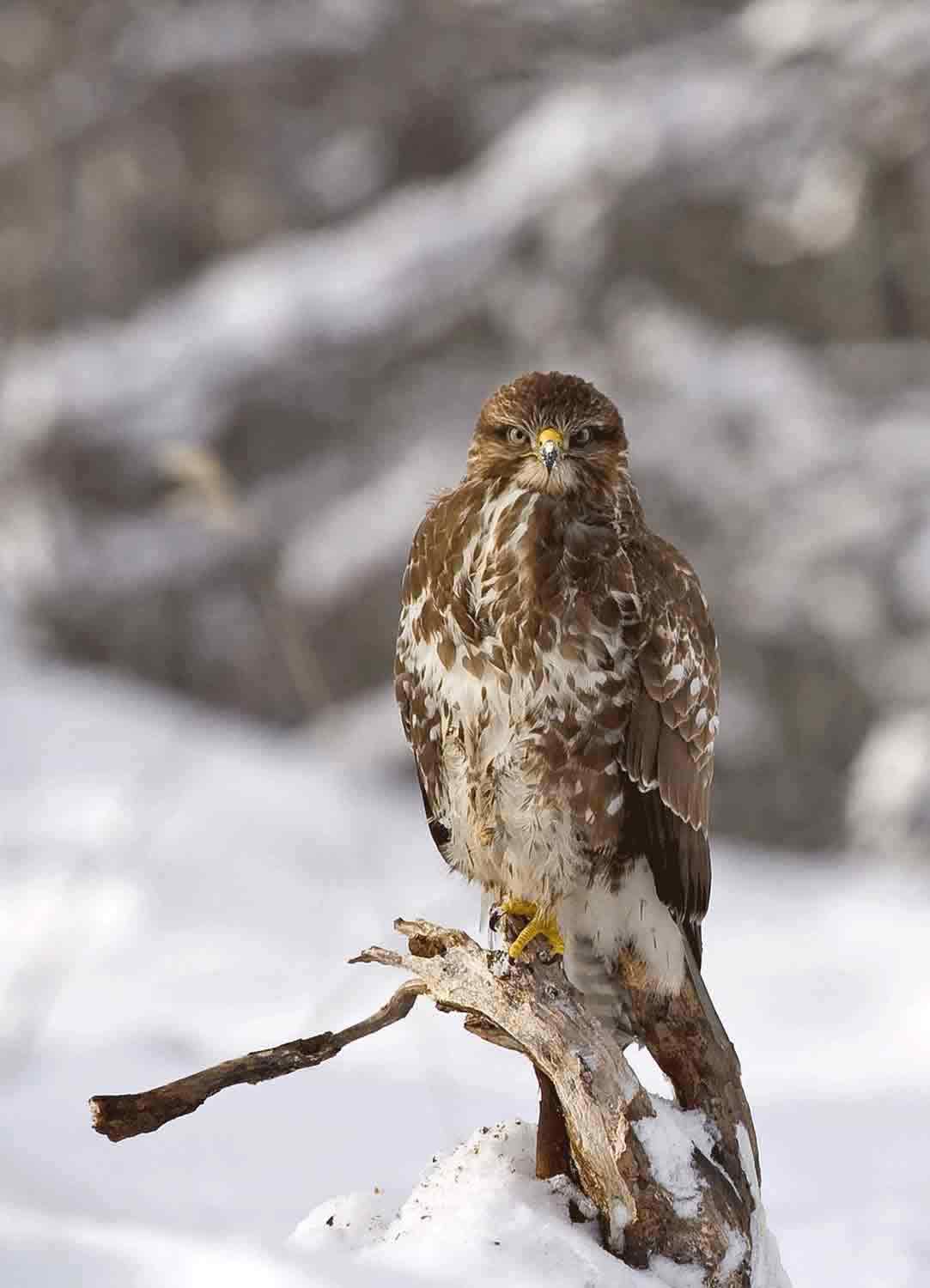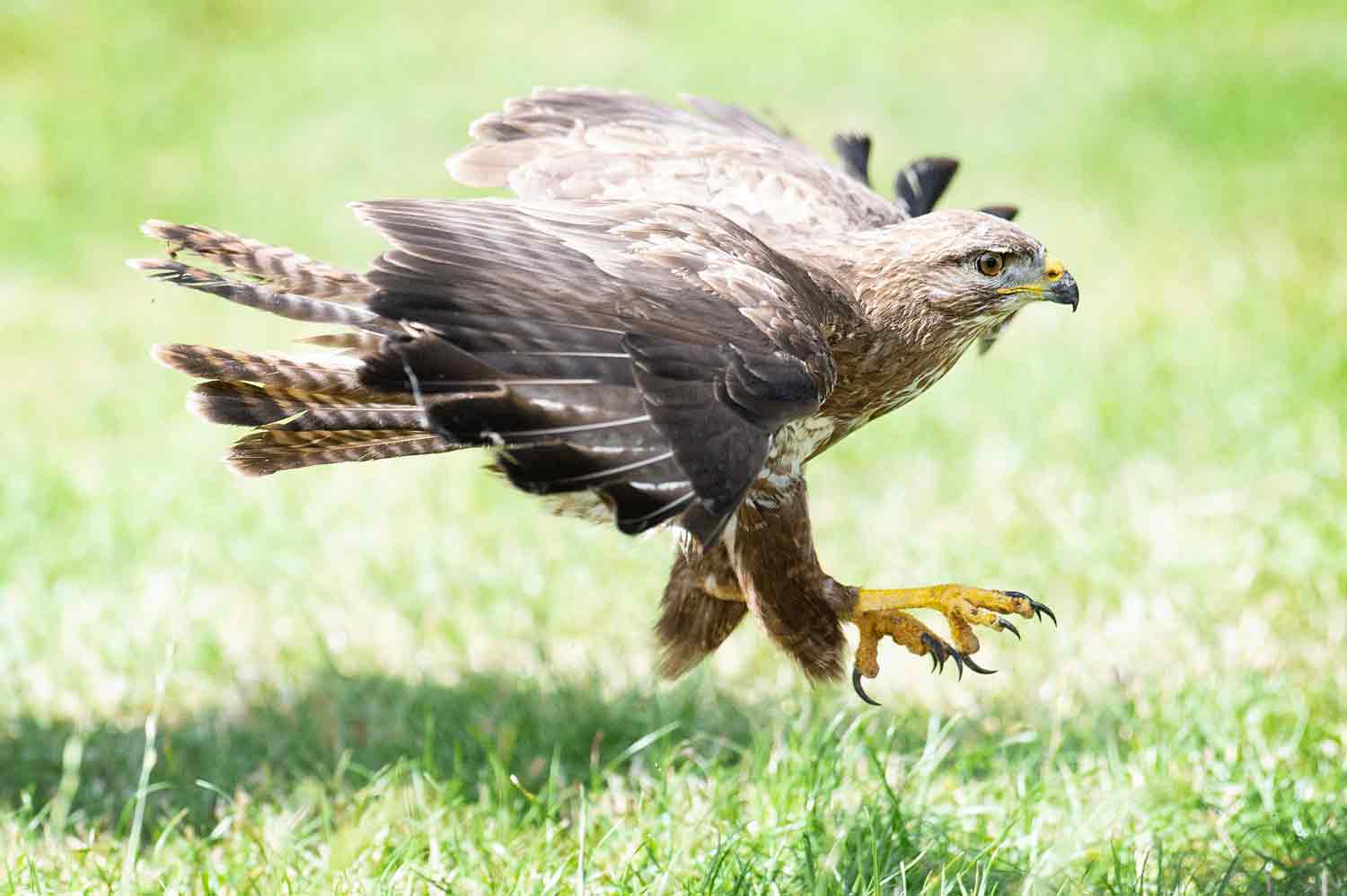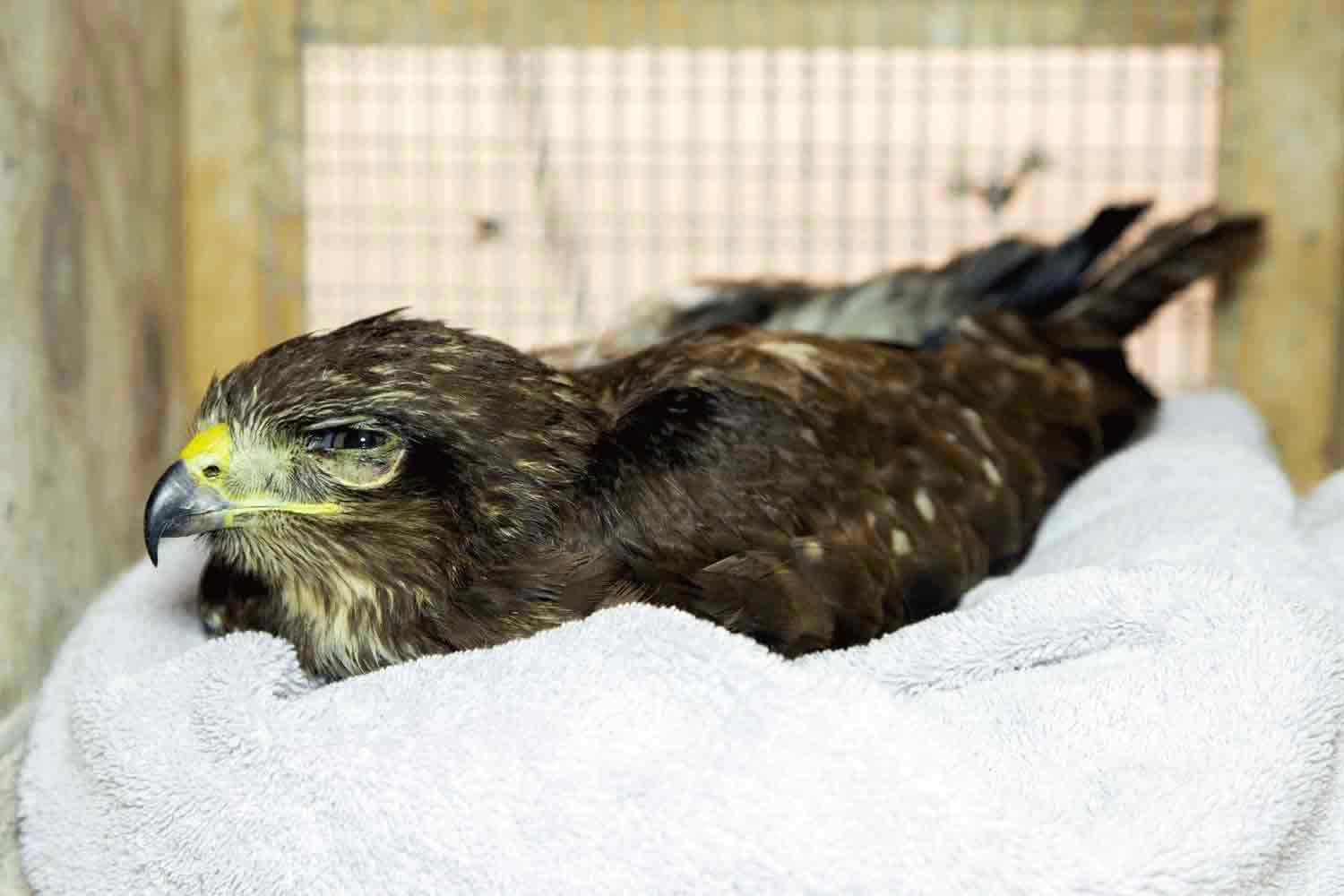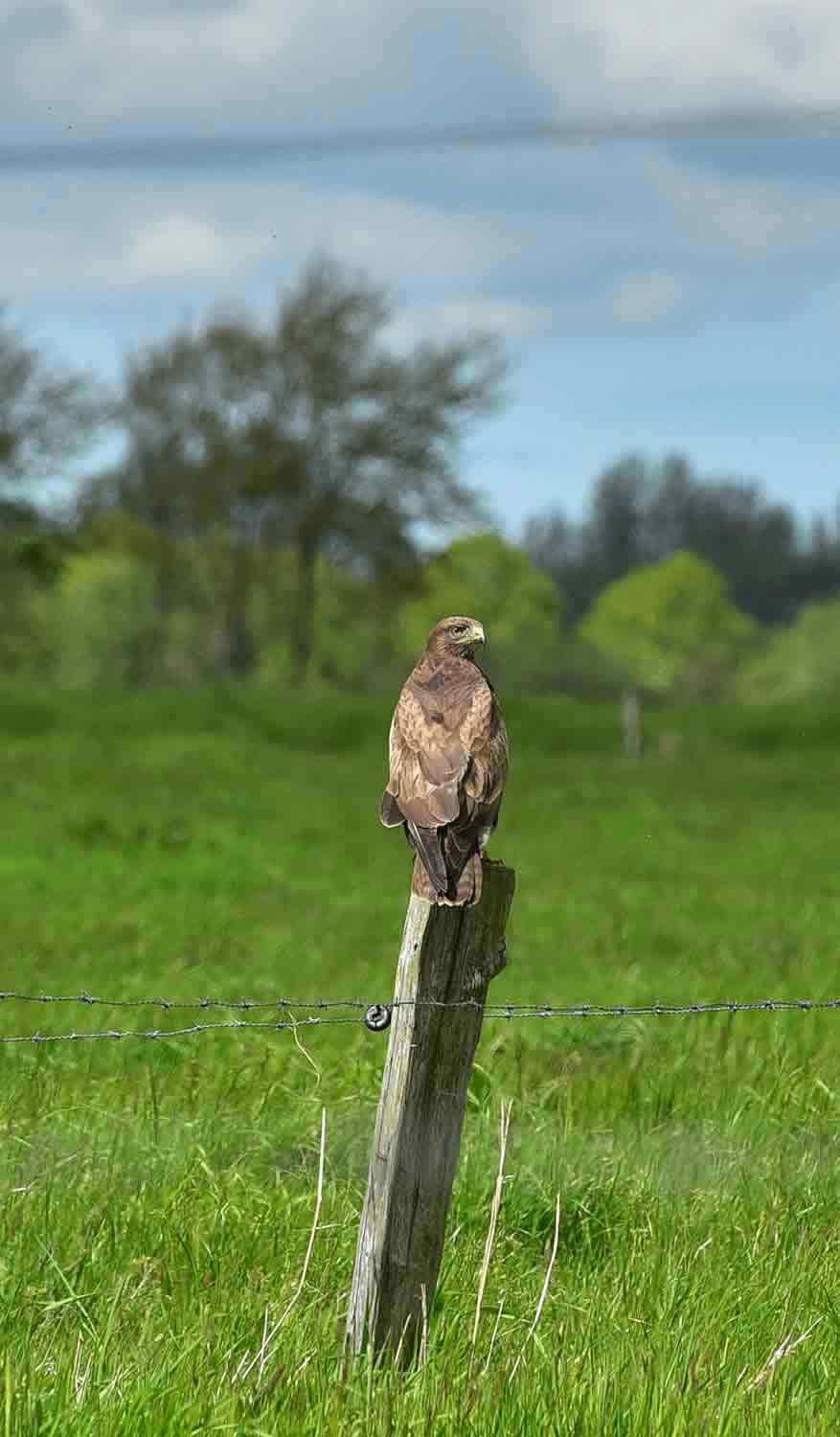Common Buzzard
Buteo buteo
Life History
Wingspan: 110 to 130cm
Weight: 0.4 to 1.4kg (females are generally larger than males)
Diet: Carnivorious – small mammals, birds, reptiles, and carrion. Opportunistic scavengers
Average lifespan: up to 12 years
When to see them: All year round
UK population: est. 77,000 to 100,000 breeding pairs
UK conservation status: Green

About
The Common Buzzard is one of the most widespread birds of prey in the UK, recognized for its soaring flight and piercing call, which sounds like a cat’s meow! With its impressive wingspan and varying plumage, from dark brown to almost white, it’s a versatile hunter that thrives in many habitats. Often seen circling high in the sky or perched on fence posts, these adaptable birds are as at home in the countryside as they are on the outskirts of towns.
Behaviour
Common Buzzards are masters of the skies, often seen soaring effortlessly in circles, searching for prey below. They are opportunistic feeders, taking advantage of live prey, scavenging on roadkill, or even stealing food from other birds of prey. In spring, you might witness their dramatic aerial displays, which involve steep dives and calls to establish territory or attract a mate.
Their adaptability has allowed them to thrive in woodlands, moorlands, farmland, and even urban areas. Though solitary or seen in pairs during the breeding season, buzzards may gather in groups to take advantage of thermals or plentiful food sources.


Their Threats
Poisoning: Intentional or accidental poisoning (e.g., rodenticides) can have fatal consequences.
Habitat Loss: Changes in land use, deforestation, and intensive farming reduce nesting and hunting areas.
Persecution: Though protected, illegal shooting or trapping still occurs in some areas.
Collisions: Buzzards may collide with vehicles, particularly when scavenging roadkill.
How You Can Help
Create Buzzard-Friendly Habitats: Allow woodlands and hedgerows to thrive, providing nesting and hunting grounds.
Report Wildlife Crime: If you suspect illegal persecution, report it to the RSPB or local authorities.
Avoid Rodenticides: Use non-lethal pest control methods to prevent secondary poisoning.
Support Conservation Groups: Donate to or volunteer with organizations that work to protect birds of prey.

Frequently Asked Questions
I found an injured buzzard. What should I do?
I found a buzzard chick on the ground. Should I intervene?
Not necessarily. Observe from a distance to see if the parents are nearby. If the chick appears uninjured and in a safe location, it’s best to leave it, as the parents are likely still caring for it. If in immediate danger or clearly abandoned, contact a wildlife professional for guidance.
Why are buzzards often seen circling in the sky?
Buzzards use rising air currents (thermals) to soar without expending much energy while hunting or patrolling their territory. This behavior also helps them scan for prey from above.
Are buzzards dangerous to pets?
Buzzards rarely pose a threat to pets. They typically hunt small mammals like rabbits or rodents and are unlikely to attack anything larger unless it’s weak or injured.